This is the 17th in a series of posts on the Sony a9. The series starts here.
This post is more on the a9 read noise. I’ve got one thing that’s of interest to non-techies, then I’m going to wander off into the sensor-reverse-engineering thicket.
The thing that might be of general interest is the way the engineering dynamic range (EDR), which is full scale divided by the read noise, varies with ISO and shutter mode. I’ve blown up the lower-ISO portion of the EDR curve so you can see the differences. All measurements in this post were made at 1/1000 second shutter speed.
You can see that the EDR is highest — about 12.8 stops — with the electronic shutter on and the shutter drive mode set to single shot. It’s worst — about 12.5 stops — when electronic first-curtain shutter (EFCS) is on and it’s in continuous mode. The other two modes are about he same and in between. At ISO 200 and above, the only thing that makes a difference is whether the drive mode is single shot or continuous, with single shot having a small advantage.
None of these differences are going to be important unless you’re really lifting the shadows in post.
OK, that’s it for normal photographers; only nerds should venture further.
Techie comment on the above: why should the ES and the EFCS have different RN? We’ve seen in the oscilloscope pictures that EFCS does a sequential reset (and presumably sequential reads) while the EFCS does resets and reads in groups of 12 rows. Does it use a different ADC strategy when it’s sampling in groups?
If you care about the anomalies that I’ve mentioned previously, I have reprocessed my dark frame data and present the following for your viewing pleasure:
With EFCS on and the drive set to continuous, there’s not a lot of difference between the raw channels until the transition from ISO 1000 to 1250. That funny flat spot at the transition from ISO 160 to 200 and 1000 to 1250 is pretty striking.
In single shot mode, the green channels (averaged here) actually goes the opponste way from what you’d think on the transition from ISO 160 to 200.
With the electronic shutter on, it’s the red channel that spectacularly misbehaves at the ISO 160 to 200 transition.
The red channel is also the worst in single shot mode.
What does this all mean? At this point, it’s a mystery to me, but I present the data for your edification. If you have a theory, let me know.
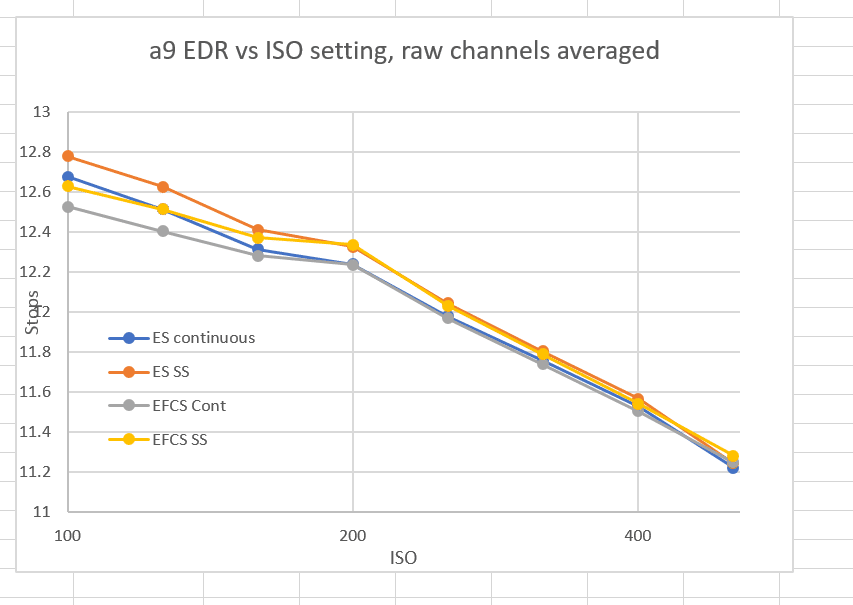
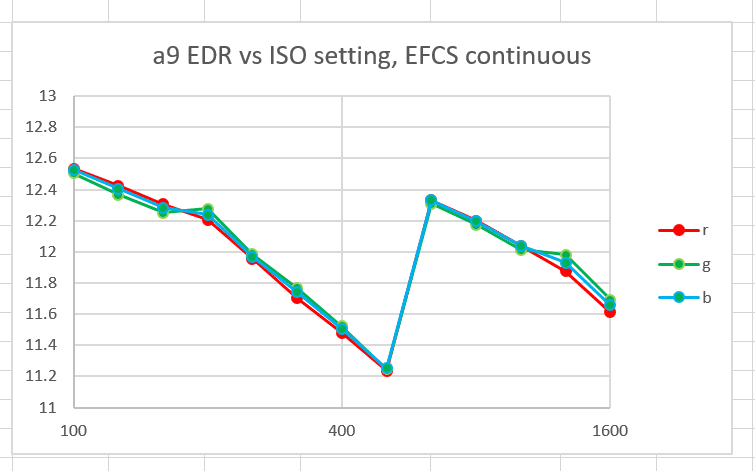
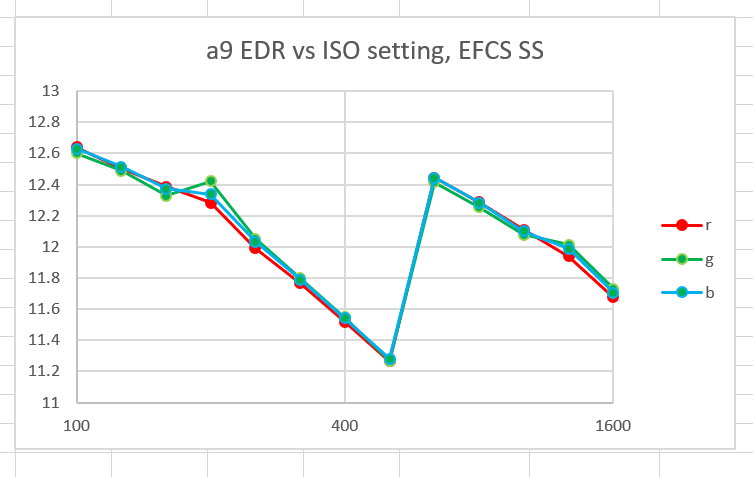
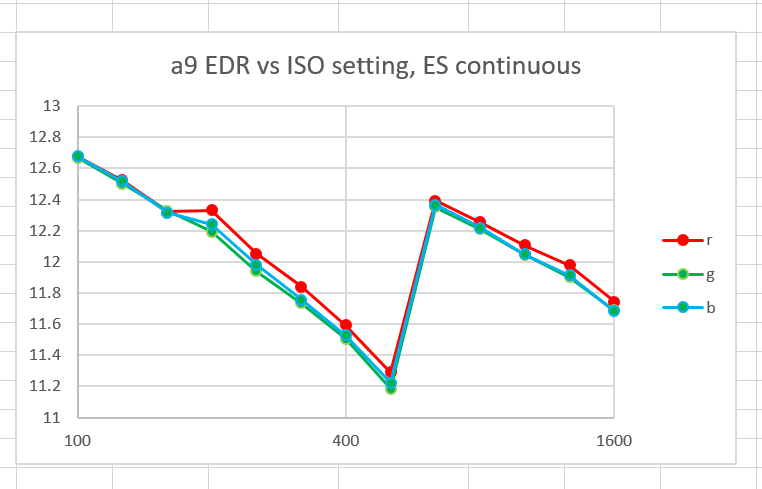
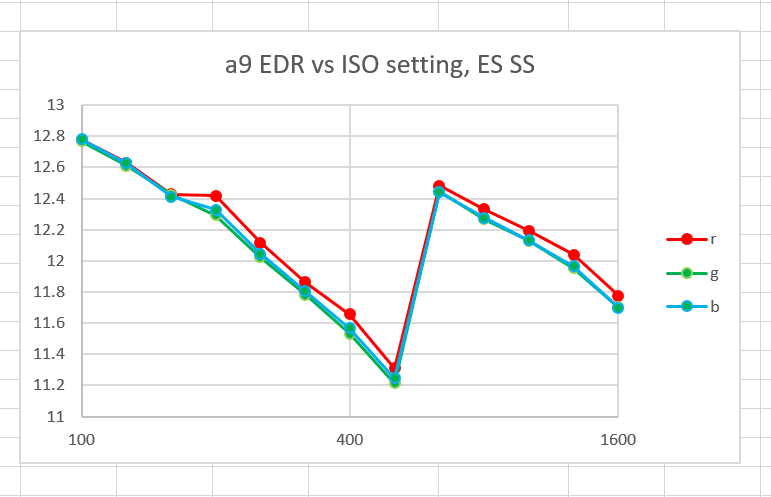
Eric Calabros says
Maybe in ES mode, read out of all three channels doesn’t happen at the same time (G and B first, then R), and this delay starts to kick at ISO 160.
sounds stupid? Sorry 🙂